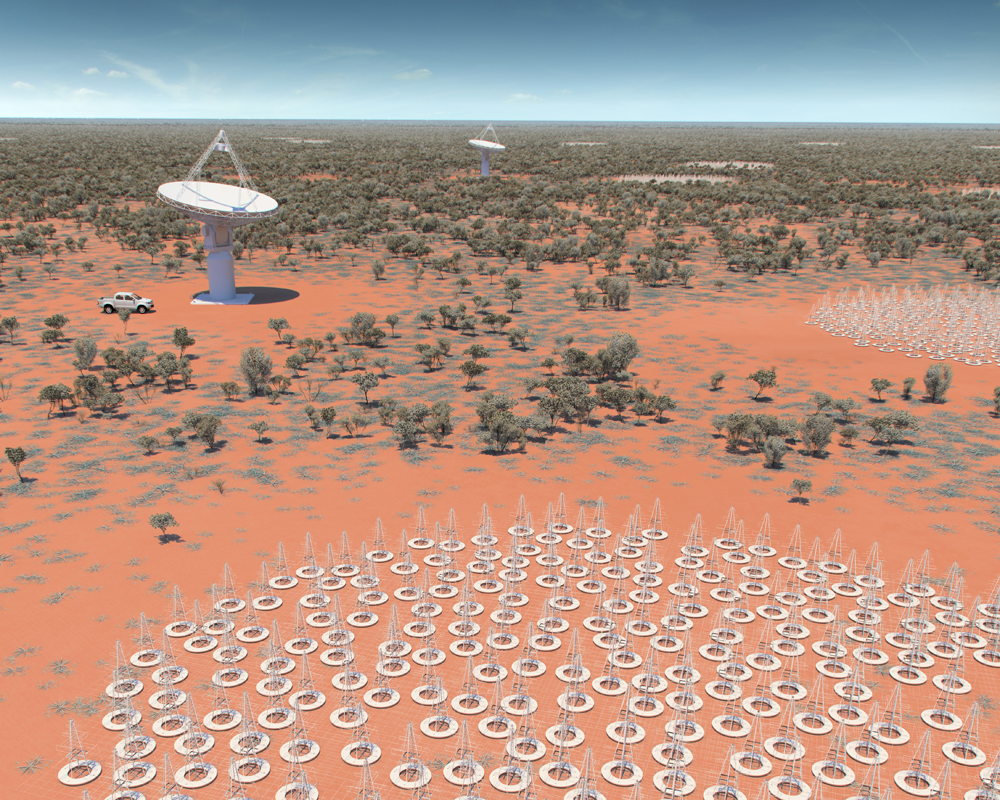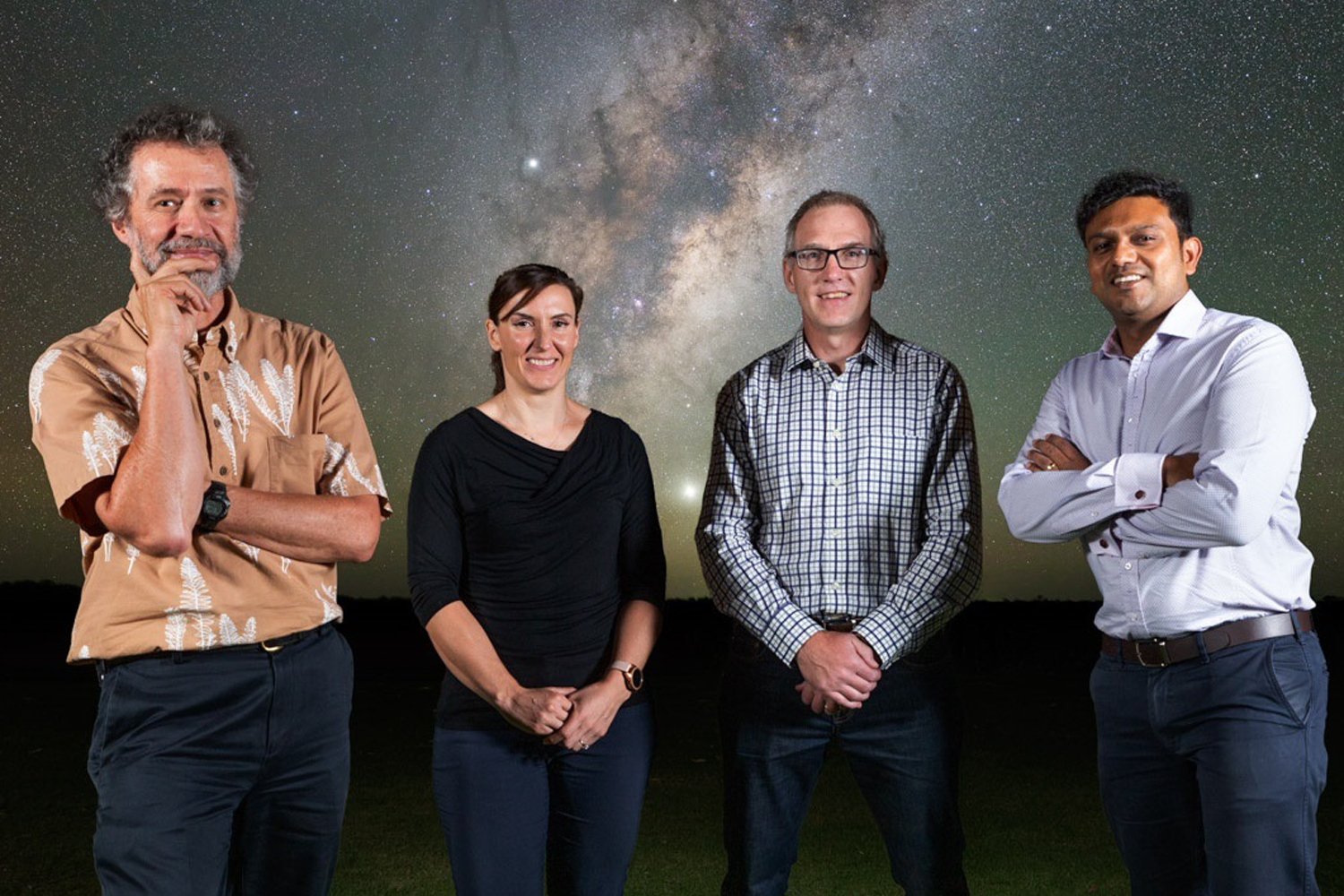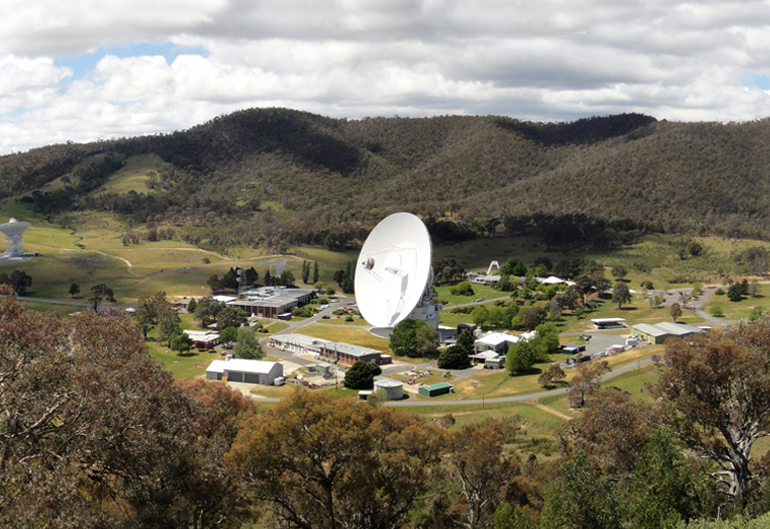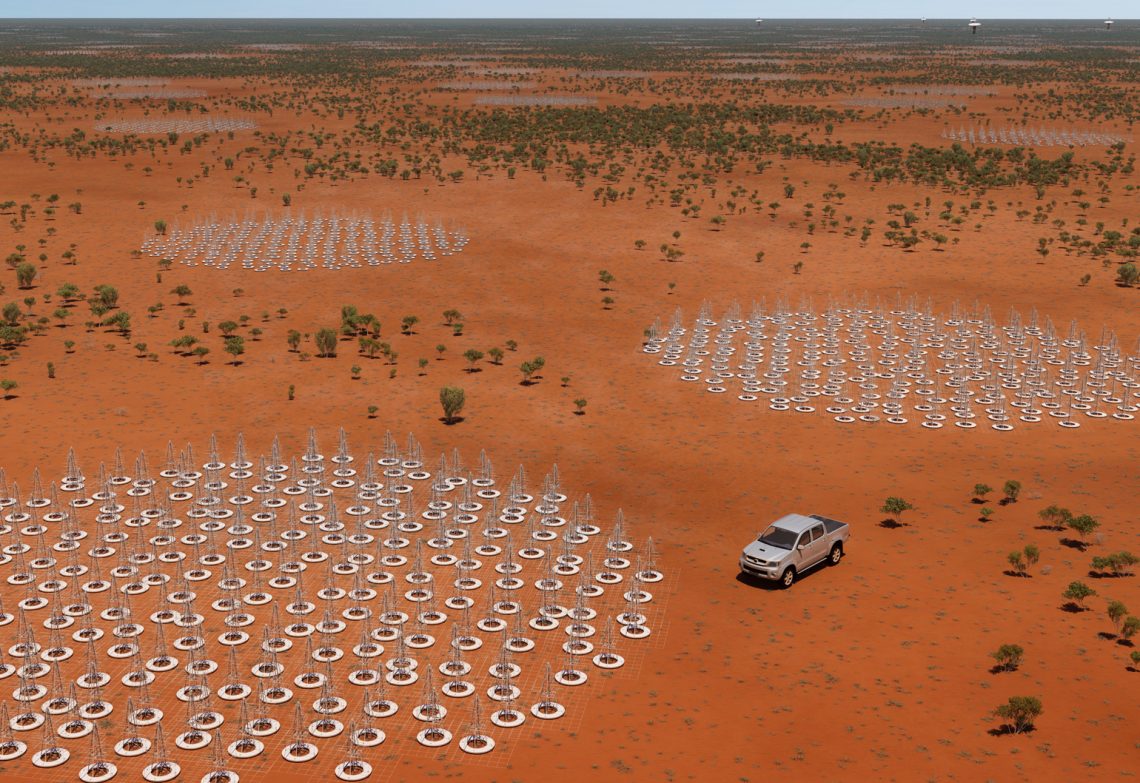Engineers and scientists have put the finishing touches on designs for Australia’s contribution to what will be the world’s largest radio telescope: the Square Kilometre Array (SKA).
Designs for the Square Kilometre Array (SKA) facility in Western Australia received the tick of approval this week during its critical design review, and can now move on to the final steps before construction starts in 2020.
Once completed, the multi-billion dollar SKA project will probe the corners of the universe to expand our understanding of its origins — and it will do so hundreds of times faster and in more detail than any existing facility.
Laying the groundwork
Australia’s Square Kilometre Array will be a web of more than 130,000 low-frequency antennas located in the Murchison Radio-astronomy Observatory in Western Australia (South Africa will host the other SKA facility).

The SKA’s success hinges on signals from thousands of antennas spread over many kilometres aligning with extreme precision. Infrastructure Australia Project Manager and Aurecon telecommunications infrastructure engineer Rebecca Wheadon said many of the challenges in ensuring this stem from the vastness and remote location of the site.
“We are working out in the middle of the desert, and we need to protect the radio quiet nature of the site,” Wheadon said.
“There’s a significant amount of engineering smarts that go into achieving that.”
For completion of this most recent phase, engineers were tasked with designing onsite support infrastructure, including a low central processing facility (CPF), a 1500-square-metre supercomputing centre.
“The CPF building is effectively a fully welded box within a box; all of the computing equipment goes within the inner shield of the building, with specially designed RFI [radio frequency interference] doors to ensure we do not pollute the air with RFI,” Wheadon said.

This includes any emissions from cooling equipment, pumps and lights. Hundreds of kilometres of access tracks and trenching for power supply and cables are also required to connect the sprawling network.
“Data flows will be on the scale of petabits, or a million billion bits, per second — more than the global internet rate today, all flowing into a single building in the Murchison,” said CSIRO’s SKA Infrastructure Consortium Director Antony Schinckel in a statement.
“To get this data from the antennas to the telescope’s custom supercomputing facilities, we need to lay 65,000 fibre optic cables.”
Coming into focus
Senior Electrical Engineer James Massoud, also from Aurecon, likened the electrical fitout to a “scaled-down version” of the east-coast transmission network, with long distances between demand centres and generation points.
“The scale of the site led to a significant electrical power distribution network, characterised as a long, low-density network,” said Massoud, who served as the power distribution lead engineer for the Infrastructure Australia consortium.
The team also had to “look back in time for mechanical or analogue ways of doing things”, he said, as digital technologies would disturb the radio quietness of the site.
The Murchison region, about 800 km north of Perth, has a legislated quiet zone of up to 260 km to limit interference. Keeping the ‘noise’ to a minimum is important, as the SKA antennas will be receiving extremely weak signals from the far reaches of the universe. Experts including CSIRO principal engineer and RFI specialist Carol Wilson advised on how to prevent the faint signals from being drowned out by the sites own equipment, like the CPF.
“One of the challenges is that the infrastructure equipment is not well characterised in terms of radio emissions, unlike radiocommunications equipment where the frequency power level and other technical qualifications are clearly identified,” she said.

This milestone is the culmination of nearly a decade’s worth of work by an Infrastructure Australia industry partnership comprising experts from CSIRO and Aurecon.
Although the SKA project will physically reside in Australia and South Africa, in all more than 12 international engineering consortia, representing 500 engineers and scientists from 20 countries, are contributing to the telescope’s design, construction and eventual operation.
A critical design review for the entire SKA system will take place later this year or early next year, and construction is set to begin in 2020.
A rich history, a growing legacy
This isn’t Australia’s first foray into deep space exploration. Its open landscape, clear skies and prime location in the Southern Hemisphere are assets for several ongoing and emerging projects.

Probably the most well-known facility is the Canberra Deep Space Communication Complex (CDSCC). It’s one of three anchor points for NASA’s Deep Space Network, with sister facilities in Madrid, Spain, and Goldstone, US.
Many of the amazing images and data beamed down from the ether are received through the CDSCC, where ‘spacecraft whisperers’ track spacecraft as close as Mars rovers or as far as the Voyager 2 (now in interstellar space, about 18 billion km away). The CDSCC also famously received the first footage of Neil Armstrong walking on the Moon.
Australian engineers and scientists also played a vital role in designing aspects of the Aperture Spherical Telescope (FAST), nestled in the mountains of southwest China. FAST relied on the BIM software expertise of Bentley engineers, and CSIRO was brought on board to construct the centrepiece of the mammoth, 500 metre-wide radio telescope: a 19-beam receiver with a tolerance of 1 millimetre.
The SKA project will add to the country’s already stellar resume, and further cement its status as a major player in the booming global space engineering industry.
“In addition to the incredible scientific potential of this project, we expect that the SKA will generate many spin-off benefits that we can’t yet anticipate,” said Australian SKA Director David Luchetti.
“We want to make sure Australia is best placed to capture these benefits.”



